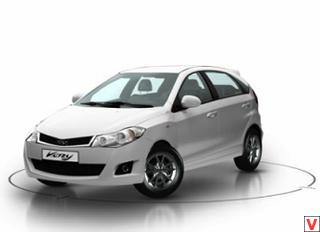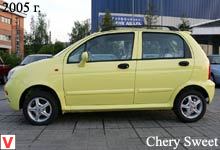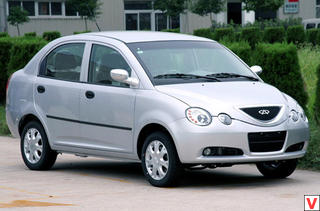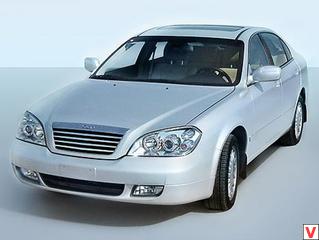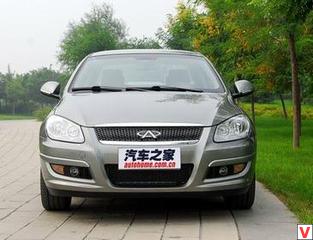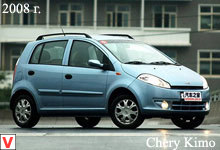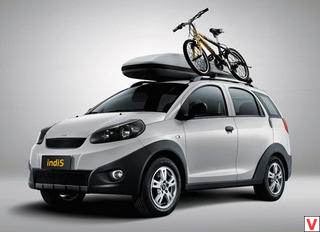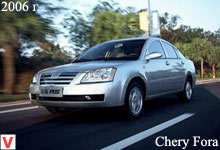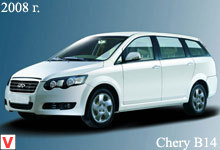
The Chery Tiggo (T11, Tiggo 3) compact crossover debuted on the Chinese market in the spring of 2005, and in December of that year, it began selling in Russia. In our country, the Tiggo is assembled in Kaliningrad at the Avtotor plant and in Novosibirsk (NAZ plant). At the Shanghai Motor Show in April 2007, the new Tiggo 5 and Tiggo 6 models were introduced, and their mass production is scheduled to begin in 2008.
If you don’t know about the existence of RAV4 and CR-V, which this SUV is frankly similar to, then the design of Tiggo should be considered quite stylish, especially since, according to the official statement of the manufacturer Chery Automobile Co., Ltd, Lotus and Japanese Mitsubishi took part in the creation of the car Automotive Engineering Corporation. Basic equipment includes power steering, height-adjustable steering column, air conditioning, fog lights, electric mirrors and electric windows, heated front seats, central locking, 16-inch alloy wheels, ABS and EBD, 2 front PB, 5-disc CD changer, signaling and painting "metallic".
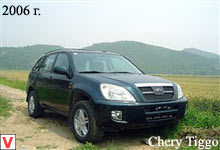
For an extra fee are available leather interior and electric. By capacity Tiggo at the level of the previous generation RAV4. At the driver’s seat, a large-sized person will feel quite at ease.
Good ergonomics; three-spoke steering wheel, the shape of the seats and the layout of the panel resemble the Japanese. The differences relate to the details of the dashboard and control keys. The climate control system in the basic configuration provides a comfortable temperature in the cabin. It can fit five people. The back row of seats can take three passengers, though the doorway is somewhat narrow. Trunk volume 456 liters.
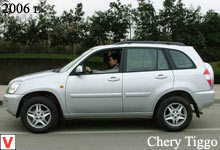
It can be further increased by folding the rear seatbacks separately. Two licensed Mitsubishi gasoline engines are installed on the Tiggo, sold in Russia: 2.4 liter 4G64S4M (129 hp, 198 Nm) and 2 liter 4G63S4M (125 hp, 168 Nm); for other markets, the Tiggo can be equipped with a 1.8-liter SQR481FC (132 hp, 170 N m) and a 1.6-liter SQR481F (109 hp, 144 N m). All of them are 4-cylinder 16-valve with distributed injection.
Fuel consumption from 7 to 9.5 liters of AI-92 gasoline per 100 km in a country cycle (depending on engine size and type of transmission). The maximum speed of 160 km / h for a model with a 1.6 liter engine, 175 km / h for 2 l and 2.4 l versions and 190 km / h (according to the manufacturer) for a car with a 1.8-liter engine. Acceleration to a hundred takes 12 seconds. The first two engines are aggregated as 5MKPP, and 4-speed automatic; versions with 1.8 liters and 1.6 liters engines - only a manual transmission. In the Russian market, Tiggo is only coming from a mechanical gearbox.
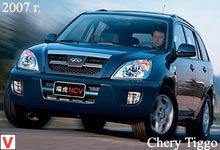
The gearbox is not bad - the gear shift is quiet, smooth and precise, the gearbox lever is comfortable, a little effort is needed to change the gear. Mitsubishi engines provide an acceptable traction force at any speed, due to which the dynamics of Tiggo is quite decent. Their work deserves all praise, not counting some noisiness, which can be explained by the lack of sound insulation. Most of the modifications Tiggo are equipped with only front-wheel drive, the full set only with a 2.4 liter engine. In normal mode, the front-wheel drive car, and when the wheels slip, the rear axle is automatically connected.
The absence of locks, as well as downshifting, limits the use of the machine on serious off-road. Despite the fact that Tiggo is not a full-fledged jeep, most of the small obstacles are overcome by him without much difficulty. Powerful motor and significant 155 mm ground clearance contribute to good vehicle traffic on poorly paved roads. The minimum clearance at full load is 135 mm. Brakes front ventilated disc, rear disc. Safety in motion is provided by ABS and EBD. Front suspension independent MacPherson strut on coil springs, rear independent on transverse and trailing arms. Handling car as a whole is not bad.
The steering is quite informative, despite the significant steering radius. On a straight line car keeps steadily, but in turns it rolls a little; suspension copes with most road surface irregularities.
